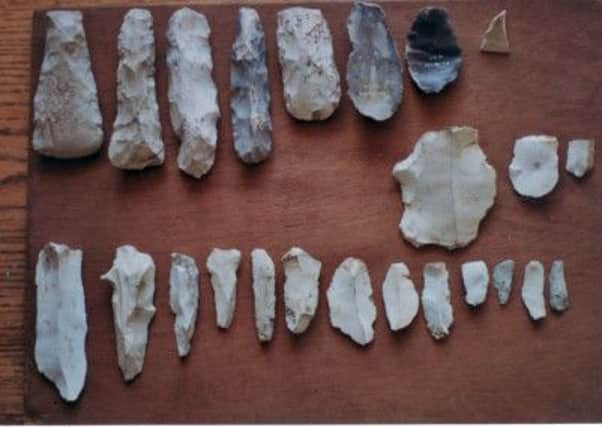Nature Notes: Ancient tools that lie scattered across the Downs


Perhaps they would not have such sharp eyes as he has. But these objects are lying about wherever you are on a chalky field.
Not all as obvious as this collection in my photo. These are among the best I have collected over forty years in Sussex.
Advertisement
Hide AdAdvertisement
Hide AdTop left is the best. It is a small polished axe nearly four inches long. It was somebody’s treasure, up to seven thousand years ago during the Neolithic Stone Age.
I found it quite by chance while running through some downland woods. I snatched it up and continued. Years of ore careful peering at the ground has never yielded a better.
The others in that top line-up are well made but not polished. All have the characteristic of a straight top and secondary flaking on the wide broad side of the implement, with tertiary flakings on the edges of the blade.
Bottom left is a fine, thin, sharp knife. This is similar to dozens I have found in a particular part of the South Downs.
Advertisement
Hide AdAdvertisement
Hide AdIt seems this was a knife factory. Perhaps a specialist flint knapper had found particular nodules that were easily pared down into blade and had cornered the market. You could easily cut through meat with this one.
Next to it is a type of instrument I see quite a lot of around here at West Dean. The blade with a hook on it. All I can think of with this instrument is that it tore through tendons or tough meat to help the blade.
Many small blades have a nick out of them, which seems purpose built. That might also have been a way to cut a tendon in the kitchen. I have never found an arrow head with barbs.
One of the most extraordinary sights I ever saw was at Beachy Head, after a recent cliff fall. Exactly one side of a dead straight shaft made in the Neolithic almost 500 feet deep had been exposed.
Advertisement
Hide AdAdvertisement
Hide AdIt was not there very long before being obliterated by another fall.
But it showed the footholds spiralling down the shaft and right at the bottom where I was standing a side shaft into very large blue flints the size of rugby balls.
How did those miners know the special flints were there, and what sort of danger were they facing going so far down into the chalk without air or light.
It would be hard to imagine a badger or a rabbit surviving so deep underground. But those flints must have been like gold or diamonds are to us. Large surface flints were no use to them because frost fracture could make them shatter.
Richard Williamson